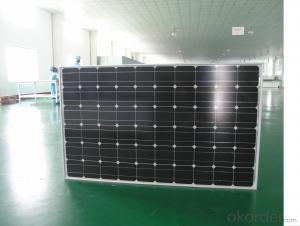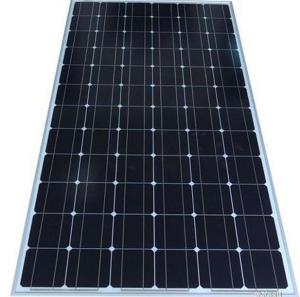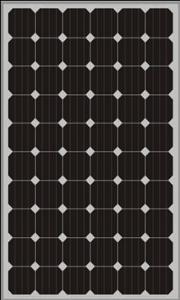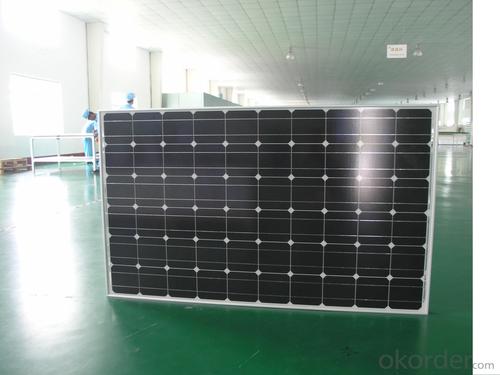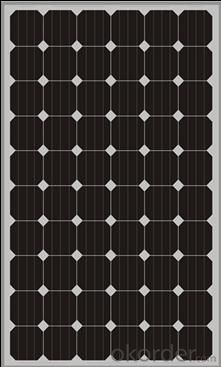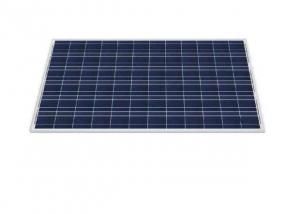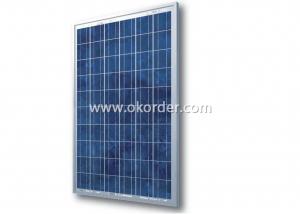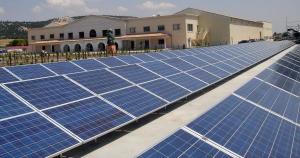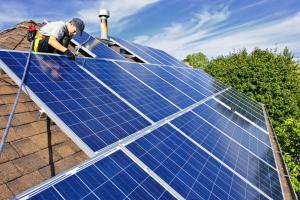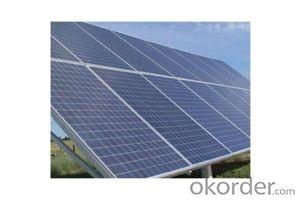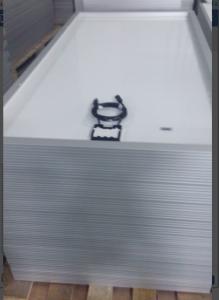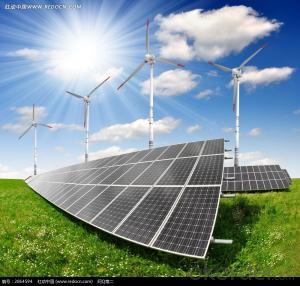Solar Panels New Hampshire - Monocrystalline Solar Modules 250w
- Loading Port:
- China Main Port
- Payment Terms:
- TT or LC
- Min Order Qty:
- -
- Supply Capability:
- -
OKorder Service Pledge
OKorder Financial Service
You Might Also Like
1.Structure of Solar Module Description
CNBM Solar's photovoltaic module is designed for designed for large electrical power requirement. It is the optimal choice for both on-grid and off-grid power systems. CNBM Solar offers high performance of power per square foot of solar array.
2.Main Features of the Solar Module
Solar Cell: High efficency crystalline solar cell. Even if under the weak light, the solar module can produce maximum power output.
Tempered glass: Anti-reflecting coating and high transmission rate glass increase the power output and mechanical strength of solar module.
EVA and TPT: Using high quality EVA and TPT to prevent destroying and water.
Strong aluminum frames to strengthen the load hold and to stand against high wind.
Junction box: Multi function junction box with water proof.
Long lifetime: ≥25 years; Less power decrease.
Good performance of preventing from atrocious weather such as wind and hails.
Resisting moisture and etching effectively, not effected by geology.
The certificate issued by international authority: UL, TUV, IEC, VDE, CE.
3.Solar Module Images
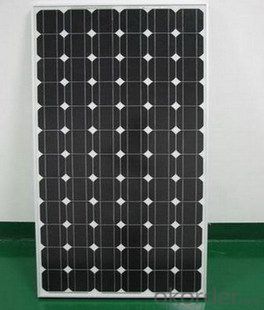
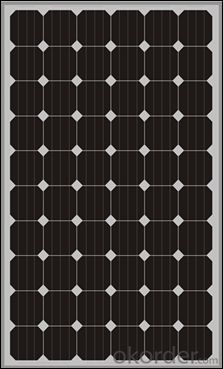

4.Solar Module Specification
Rated maximum power (Pmax) 250W
Open circuit voltage (vOC) 37.30
Short circuit current (Isc) 8.78
Maximum power voltage (Vmp) 30.10
Maximum power current (Imp) 8.31
Cell efficiency (%) 17.50%
Max system voltage (VDC) 1000V DC
Temperature coefficient of Vm -0.241%/K
Temperature coefficient of Im +0.033%/k
Temperature coefficient of power -0.37%/K
Maximum Series Fuse Rating 15A
Solar cell and configuratiou 60pcs(6*10)in series,156*156mm monocrystalline
Junction box IP65,1000VDC,TUV certified;6 pcs Schottky By-pass diodes
Cable type & CONNECTOR 4m㎡,TUV certificated,0.9m length;MC4
Encapsulation low iron tempered glass,3.2mm thickness,light transmission above 91%;TPT and fast cure EVA
Farame clear anodized aluminum alloy,50/45mm thickness,silver
Dimension (l*W*H) 1640*990*50mm/45mm
Weight 20KG/19KG
Heavy mechanical load salient features 540Pa (ACCORDING TO ICE61215)
Hail impact test lce ball dianeter 25mm,23m/s
Operating temperature -40℃~+85 ℃
Standard test conditions: STC:AM=1.5,1000W/m2,cells temperature 25℃
Power tolerance:±3% (can be provided 0~±3%)
5.FAQ of Solar Module
1. Q: Do you have your own factory?
A: Yes, we have. Our factory located in Jiangyin city, jiangsu province.
2. Q: How can I visit your factory?
A: Before you take off from your country, please let us know. We will show you the way,or arrange time to pick you up if possible.
3. Q: Could you print our company LOGO on the nameplate and package?
A: Yes, we can do that.
4. Q: Do you accept custom design on size?
A: Yes, if the size is reasonable.
- Q: I read on CNN's website last year some company was creating a very cheap type of solar panel, that needs minimal maintenance and and has minimal glare from the sun. And the creator of the project said he one day wanted to cover every rooftop in the US with these solar panels. Seems like a good idea to me but I havent heared anything of it for a long time and I don't know what they are called... any help?
- The most cost-effective solution, which the vast majority of new installs use today, is solar alongside the regular power company. That way, you need no batteries, and if the solar array isn't producing enough at any given time, you draw from the electric company. When the array is producing more than you need, instead of just throwing that power away, the power company buys it (usually). In short, yes, you will still have an electric bill, but a smaller one. On our house, the electric bill was a little less than $5 a month, with an end-of-year settlement of an additional $2. How much does it cost? Unfortunately, that's like asking how much personal transportation costs. Some people need a van to transport the kids to soccer, some may get by with a motorcycle, others may need only a bicycle. The best thing is to contact a professional installer to get a quote based on your location and electrical usage. Solar electric does not make financial sense in all areas. Our array cost $2,000 but don't use that as a guide. Yours might be 0 times that, or half that, depending on your area and needs.
- Q: Are solar panels easy to maintain?
- Solar panels are generally easy to maintain as they have no moving parts and require minimal attention. Regular cleaning to remove dust and debris, as well as occasional inspection for any damage or shading, is usually sufficient to ensure optimal performance.
- Q: What are the financial benefits of installing solar panels?
- Installing solar panels can provide numerous financial benefits. Firstly, solar panels can significantly reduce or eliminate monthly electricity bills as they generate free and sustainable electricity from the sun. This can result in substantial long-term savings, especially in areas with high electricity rates. Moreover, solar panels often have a long lifespan, making them a worthwhile investment. Additionally, many governments and utility companies offer financial incentives such as tax credits, rebates, and net metering programs, further reducing the upfront cost and maximizing the financial return. Lastly, solar panels can increase the value of a property, making it more attractive to potential buyers and potentially yielding a higher resale value. Overall, by installing solar panels, individuals can save money, increase their property value, and contribute to a more sustainable future.
- Q: What happens to solar panels during a power outage?
- During a power outage, solar panels do not generate electricity as they rely on the grid for their functioning. This is because most solar panel systems are grid-tied, meaning they are designed to feed excess power back into the grid and draw power from the grid when needed. However, some off-grid solar systems equipped with battery storage can continue to operate during a power outage, providing electricity to the connected devices or storing excess energy for later use.
- Q: Can solar panels be installed on parking lots or garages?
- Yes, solar panels can be installed on parking lots or garages. In fact, these areas are often ideal for solar panel installations due to the large open spaces and unobstructed sunlight exposure. Installing solar panels on parking lots or garages can help generate clean and renewable energy, reduce electricity costs, and provide shade for parked vehicles.
- Q: all i want to do is provide enough electricity for 2 fluorescent bulbs i was looking at some 80 watt panels how many of those would i need and what else do i need for storing the electricity for use at nite? and how much would it all cost?
- The solar panels are made in China because there are fewer environmental regulations and cheap coal power. It takes a lot of energy to melt silicon and there are toxic waste products. It would be three to five times more expensive to make the panels in the US ( three times is just for reprocessing the toxic wastes ). Solar cell made in China are about $2 a watt, perhaps as low as $ a watt but in truth the claims for $ a watt or less solar panels as in thin film solar panels have much lower efficiency and require perhaps ten times more surface area.
- Q: Can solar panels power an entire house?
- Yes, solar panels can power an entire house. By installing a sufficient number of solar panels and utilizing a battery storage system, it is possible to generate and store enough solar energy to power all the electrical needs of a house. However, the size of the solar panel system required depends on various factors such as the energy consumption of the house, geographic location, and available sunlight.
- Q: Can solar panels be used for camping or outdoor activities?
- Yes, solar panels can be used for camping or outdoor activities. Portable solar panels are designed to be lightweight and easily transportable, making them ideal for powering electronic devices and charging batteries in remote locations. They harness the sun's energy to generate electricity, allowing campers to have a reliable and sustainable power source while enjoying the outdoors.
- Q: Ok so i'm writing this research paper on why solar panels are the best way to quot;go greenquot;. I need at least 5-7 reasons why they are good. and a common counterargument that i could defend. I've already come up with incentives and efficiency but i need a few more Please help its very important and worth half my grade
- I'm a big fan of solar panels, and we even have an array on our house, but I would have a hard time supporting the thesis that solar panels are the best way to go green. Conservation and efficiency are. Using less is better than making more. If someone has the money for panels, but their house is poorly insulated, their money would be better spent on insulation. Pretty much anyone in the solar industry would agree. And solar hot water makes sense over a much wider geographical range than solar electric.
- Q: what percentage of sunlight is converted into electrical energy in a solar panel?
- Depending on the type of solar panel, any where from 6% to 42.8%.
Send your message to us
Solar Panels New Hampshire - Monocrystalline Solar Modules 250w
- Loading Port:
- China Main Port
- Payment Terms:
- TT or LC
- Min Order Qty:
- -
- Supply Capability:
- -
OKorder Service Pledge
OKorder Financial Service
Similar products
Hot products
Hot Searches
Related keywords
